LG 29EA93 Monitor Review - Rev. 1.25
by Chris Heinonen on February 12, 2013 8:49 PM ESTOnce again we are copying our charts from our Tablet and Smartphone workflow here for monitors. As I mentioned earlier, you can’t compare these to prior results due to the use of dE2000 for numbers. Another key change here is the ability to use meter profiling for doing measurements, which I’ll elaborate on here a bit to put these numbers into context.
There are two main types of meters: colorimeters and spectrometers. Colorimeters are usually cheaper, and use color filters to read the different colors of light. Spectrometers often cost more but actually “read” the light instead of using filters. This difference is key as color filters were very good when the only light sources were CRTs or CCFL lamps, but now with White and Multi-colors LEDs, and OLED displays, we have light with a different spectral makeup than before, which the filters are often not designed around. This can cause a colorimeter to have incorrect readings but a spectrometer will not.
The reason we don’t always use spectrometers is because they are much slower, and they read at low light much worse that a colorimeter. With meter profiling, you use a spectrometer and colorimeter to read colored patches from a display, and then the software analyzes the results. This creates a 3x3 correction matrix for the colorimeter that then allows it to correctly read the light from the display, even if it is LED or OLED based. The key thing here is this now allows us to read shadows better, and do more readings to produce better results.
The main area of difference here is going to be in blues. Compared to 100% White, 100% Blue has only 7% of the light output, making it very dim. This makes it harder to read for a spectrometer, which makes it more prone to error. Now that we can use a profiled colorimeter to make this reading, and in my case use a C6 meter that can average 10 results at a time to produce a more accurate number, our blue numbers may be different than before, but they will be more accurate.
| Pre-Calibration | 200 cd/m² Target | 80 cd/m² Target | |
| Primary and Secondaries dE2000 | 2.3002 | 1.4839 | 2.0847 |
| Colorchecker dE2000 | 2.1689 | 1.0185 | 0.9915 |
| Saturations dE2000 | 1.7017 | 1.0126 | 1.1254 |
With that out of the way, we can look at the CIE gamut chart and see that the LG 29EA93 has a bit more than the sRGB gamut available, with reds and greens that extend beyond the CIE triangle. Pre-calibration our numbers look very good, but with a bit of over-saturation in the reds and greens. The 200 cd/m² calibration numbers look better than the 80 cd/m² when it comes to the CIExy chart, but frankly I’m more concerned with the color checker and saturation charts. Most people only focus on the CIE chart, but it really just shows the performance of 6 colors and the size of the gamut, but tells you nothing about the performance of the other 16.7 million colors you might use.
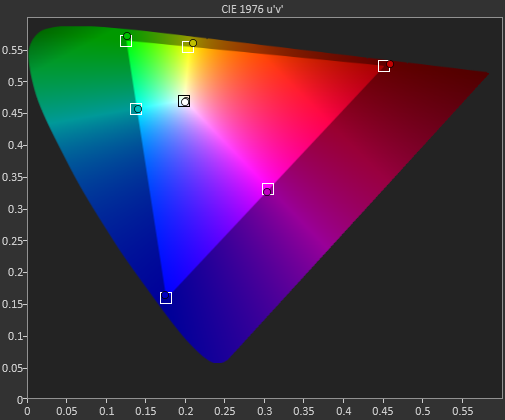
Pre-calibration, the dE2000 number for the Color Checker chart is quite good on the LG 29EA93. Until we have more monitors done with the new workflow we can’t be certain of how good this is, but overall it does look very nice. The main issues are in pure white, and those Yellow-Red-Green tones that fall at the edge of the gamut. The bit of over-saturation that we saw earlier causes these to be a bit too-rich and leads to some visible errors there.
After calibration, only those over-saturated colors provide anything to care about at all. Beyond those four points, the other 20 samples are nearly perfect, with no visible error at all even in blues. If those final four points were perfect there would be nothing to complain about at all with the LG 29EA93, but even with them it produces overall dE2000 numbers that are fantastic.
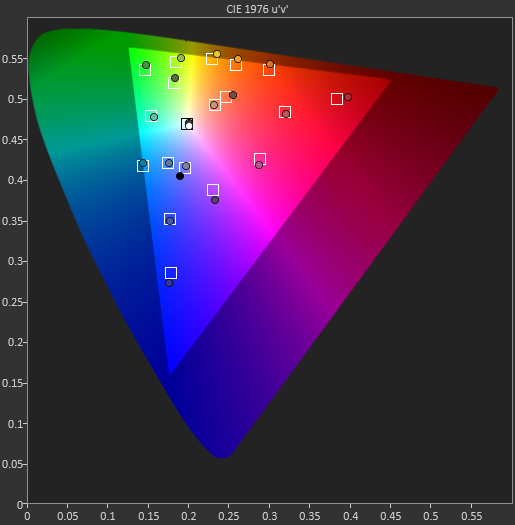
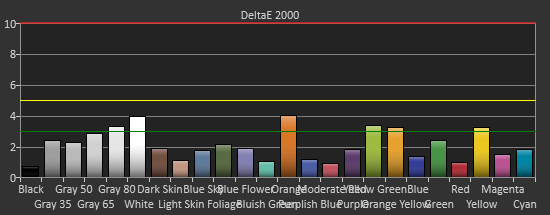
Pre-calibration, the saturation numbers for the LG are good, but you can see quite a few of the measurements are at or close to the dE2000 3.0 mark. Post-calibration this improves, especially the 20% data, with only the 100% green and yellow color swatches measuring over 3.0, and only four measurements total over a dE2000 of 2.0. The calibrations push the saturation measurements from good to excellent.
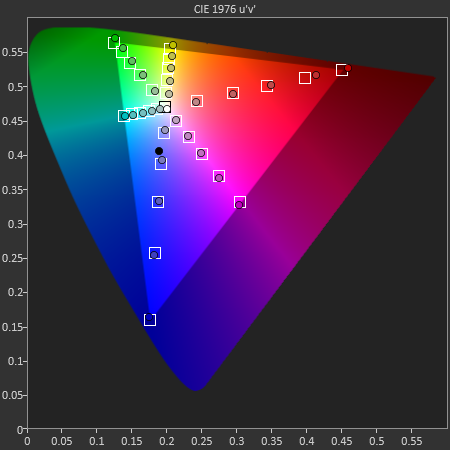
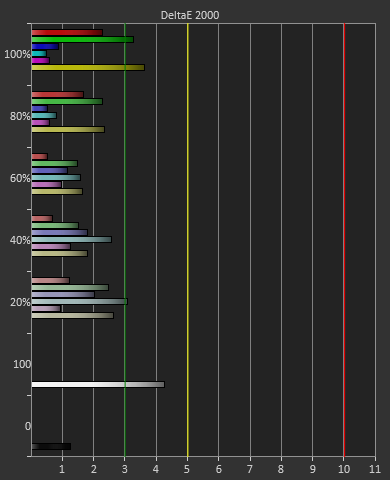
Taking these measurements in full, it seems that after calibration, the only place you will see any color errors on the LG 29EA93 is in a fully saturated red, green, or possibly yellow. As soon as the saturation drops below 100% the error level drops drastically, and you won’t be able to see an error at all. Unless you start at a pure-red screen all day long, the color of the LG 29EA93 is going to be very impressive.











108 Comments
View All Comments
Kittihawk - Thursday, June 6, 2013 - link
It's a good screen but another way of looking at it is not that it's ultra-wide but that it's ultra-cropped - sadly my old Apple Cinema 30inch display failed and I go this one to replace - loosing about 1/4 of the screen size.Some really frustrating things you need to know - there is no display port cable in the box. That is really bad because, LG, the money I use to pay you comes from being productive and I lost a day of editing while I figured out that I needed the cable and ordered off Amazon. Additionally I was really confused about not being able to get the full resolution on the VGA connection until I worked out that without a 'display port' cable you will not get the full resolution. Also your graphics card will also need to support the higher resolution sizes and even then it may not fit exactly and you will need secondary software to tweak. That might all be obvious to the computer nerds who make these things but its not to the average end user.
Also the 'really clever cardboard box' quoted by Chris (Chris Heinonen ) was absent - instead the usual polystyrene menace - so I think Chris you were a bit duped at times by LG. In addition there was a strong formaldehyde plastic small from the new monitor - not good in a bedroom, but soon became undetectable.
There was also a dead pixel - never had that with any of the Mac screens I use (I have five).
Despite all that I like it - mainly because the lower height allows me to look out of the window behind and day dream instead of doing my work!
Manub - Friday, July 12, 2013 - link
I just received mine and while checking the service menu it states V1.33.lawrencejob - Monday, July 22, 2013 - link
I bought it on Saturday for £350, Amazon.just came by to thank you: this was an excellent review and instrumental in my purchase.
One thing to add: I wasn't very impressed by the black levels (although I've yet to calibrate it properly) and the device does a remarkable job at looking both too small and enormous at the same time (by my calculations there's only a little between this and a 32" TV with 21:9 content).
lawrencejob - Monday, July 22, 2013 - link
Should probably have proof-read that before sending it.forserum - Thursday, August 1, 2013 - link
LG_Monitor_Software_TCF_Ver2.7.8_SS_ver6.1.On lg site they told me it will get the latest firmware
jezzer - Tuesday, August 27, 2013 - link
how to tell if it is a rev 1.25? anyone knows? thxCDubbs - Friday, September 13, 2013 - link
Has anyone seen benchmarks on the 29EA73 or 29EB73 coming out next week? Did they carry over the improvements from this model? It is being released at a lower price point and I am trying to determine where the compromises were made. Newegg has it on pre-order for 499 with a $50 store credit gift card.arijit.ray81 - Wednesday, November 27, 2013 - link
What's the version of DisplayPort on this? Is it 1.2?